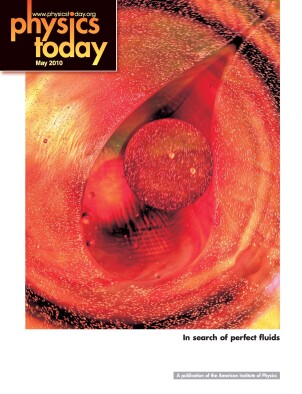Stretchy metals recoil
DOI: 10.1063/1.3431321
In materials, as the axiom goes, structure follows function: A metal’s tightly bonded atomic crystal lattice gives it strength, and a polymer’s mesh of macromolecular chains makes it elastic. Medical implants, electronic components, and other similar devices call for multifunctional materials that are both strong and stretchy. One such material is the shape-memory alloy (SMA), a polycrystalline arrangement of assorted metals that, when stressed, undergoes a structural phase transition from high to low symmetry. The transition is reversible, and above a critical temperature SMAs are superelastic—they fully recover after being stretched well beyond the reversible-deformation strain values of pure metals. Now, materials scientists at Tohoku University in Sendai, Japan, have presented evidence for an iron-based SMA that is 35 times as elastic as pure metals. The new alloy, which also features nickel, cobalt, aluminum, tantalum, and boron, has an elastic strain of 13%, as shown in the figure, almost double the value of the more expensive commercial-standard nickel-titanium alloy. Furthermore, the material’s yield strength, 800 MPa, is 1.5 times that of the nickel-titanium SMA. The researchers say that microstructured precipitates similar in composition to the bulk matrix and interspersed through it are a key to the improved mechanical strength. The greater elastic strain and strength could be exploited for mechanical damping in building materials. Also, the ferrous SMA’s magnetism is phase dependent, which makes it potentially useful for electromechanical sensing applications. (Y. Tanaka et al., Science 327 , 1488, 2010 http://dx.doi.org/10.1126/science.1183169

